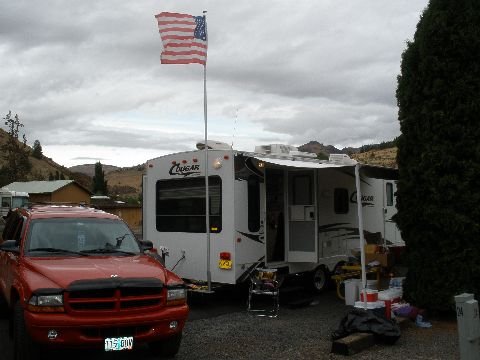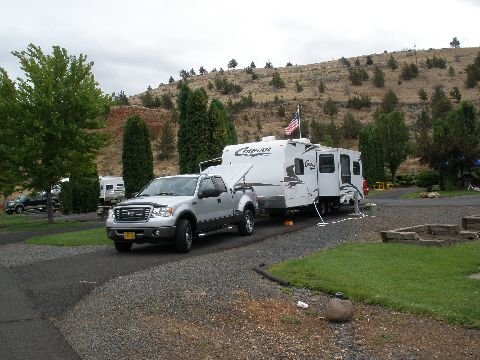Does anyone have the directions for making the PVC lamp poles that you see in some campgrounds? I wish I had stopped and asked, but you know what they say about hind sight...I am not creative, but if I had some directions, I think I could make me one. Thank you in advance for your help.
You are using an out of date browser. It may not display this or other websites correctly.
You should upgrade or use an alternative browser.
You should upgrade or use an alternative browser.
PVC lamp poles
- Thread starter mmgram
- Start date
The friendliest place on the web for anyone with an RV or an interest in RVing!
If you have answers, please help by responding to the unanswered posts.
If you have answers, please help by responding to the unanswered posts.
Gary RV_Wizard
Site Team
PVC lamp poles?? Not quite sure what you are referring to - guess we haven't stumbled across one yet. Gizmos that are popular in one area often aren't seen at all in others.
papahog
Well-known member
I have not seen one either. Are they something someone carries around with them and sits up outside the RV to provide outside lite? Are they home made?
Tom
Administrator
- Joined
- Jan 13, 2005
- Posts
- 51,974
Could he mean PVC flag poles? If so, I believe we have construction details around here somewhere.
PT
Member
I have seen these in South Carolina. Basically, it was used like a lamp post beside a driveway or side walk. I didn't pay a lot of attention but it looked rather easy to me. I think it was 1.5 inch PVC set into a collar (1.5 to 2" reducer) for the base with a porch type light mounted to the top. The power cord exited at the bottom. I suspect that the whole thing was achored with a long piece of rebar. Pvc pipe 1.5 or bigger would look ok but it probably depends on the size of the lamp base.
PT
2006 Four Winds
PT
2006 Four Winds
papahog
Well-known member
I bought a teloscoping alluminum 16 ft flag pole on ebay. I had a base made to fit under a tire for my flag pole to fit in. Then I changed my mind and attached the base to my back bumper and all the time, home base or in camp while on the road proudly fly the flag of our great nation.
Attachments
John From Detroit
Well-known member
I have seen PVC light frames for theater installs.. In fact I kind of saved the day for one poor performer who had visions of law suit liability settlements running through his head as a young lady was kicking the leg of the lamp stand then he saw the lights wiggle, and me disappear from my seat.. Shortly I re-appeared in my seat, the lights stabilized and the young lady and her father exchanged seats (I'd been watching too and when the leg came apart I acted.... FAST!!!!!!!)
Basically you make an "H" frame The lamp post mounts in the exact center of the "H" and on the "ends" of the "H" you have an elbow pointing down
you need 4 equal lenghts of PVC for the vertical part of the "H" I would suggest about 2 feet long
Two equal pieces for the "Cross bar" 4 Elbows for the "Feet (note you might use 4 short pieces to make the "Feet" a bit higher if on rough ground) and 3 "T" fittings
Assemble the two cross bar pieces into the ENDS of the T and glue
Assemble a pair of leg pieces into each of the remaining two "T" fittings (Also on the ends) and glue
Glue the "Feet Elbows" on the ends of the leg pieces, so that with the ends of the elbows pointing down the "T" fitting points to the side.
Now you get to the fun part. .Assembly, you have a choice here. Glue 'em on to the cross bar or just friction fit (Gluing is stronger but creates a storage problem... So you either will or will not glue the legs to the cross bar If you can rig a threaded fitting, this is best.
You now have a base. 4 feet (you may need to shim one or two to make it level) with a upward pointing fitting.
The "Mast" goes in here.. If you are going to put a lamp on top (120 volt) you can either run the cord down theoutside or run it through thepipe and simple drill a hole to bring it out just above the base "T"
Again a threaded adapter is good here.. but optional since gravity will hold it in place better.
NOTE: You can (if you use the right size pipes) make a "Sleeve" fitting that is a bit better than just firction fitting the fitting
This requires you use a few more parts though basically you take a smaller pipe, perhaps a foot long (or more) and slide it inside one of the larger visible pipes, glue or screw it so that it extends into the other pipe
I will leave the exact design of this to you.. but basically it's use a short pipe and a straight coupler where the "T" fittings are
(This is for the fittings you take apart and put back together)
Optional method
Drive a metal rod or fence post into the ground
Slip the PVC pipe over it
NOTE: In many camp grounds there are water and/or electric lines just a short distance below the surface.. More than one camper has driven a tent stake and been rewarded with a geyser of water as they punctured a water main
Basically you make an "H" frame The lamp post mounts in the exact center of the "H" and on the "ends" of the "H" you have an elbow pointing down
you need 4 equal lenghts of PVC for the vertical part of the "H" I would suggest about 2 feet long
Two equal pieces for the "Cross bar" 4 Elbows for the "Feet (note you might use 4 short pieces to make the "Feet" a bit higher if on rough ground) and 3 "T" fittings
Assemble the two cross bar pieces into the ENDS of the T and glue
Assemble a pair of leg pieces into each of the remaining two "T" fittings (Also on the ends) and glue
Glue the "Feet Elbows" on the ends of the leg pieces, so that with the ends of the elbows pointing down the "T" fitting points to the side.
Now you get to the fun part. .Assembly, you have a choice here. Glue 'em on to the cross bar or just friction fit (Gluing is stronger but creates a storage problem... So you either will or will not glue the legs to the cross bar If you can rig a threaded fitting, this is best.
You now have a base. 4 feet (you may need to shim one or two to make it level) with a upward pointing fitting.
The "Mast" goes in here.. If you are going to put a lamp on top (120 volt) you can either run the cord down theoutside or run it through thepipe and simple drill a hole to bring it out just above the base "T"
Again a threaded adapter is good here.. but optional since gravity will hold it in place better.
NOTE: You can (if you use the right size pipes) make a "Sleeve" fitting that is a bit better than just firction fitting the fitting
This requires you use a few more parts though basically you take a smaller pipe, perhaps a foot long (or more) and slide it inside one of the larger visible pipes, glue or screw it so that it extends into the other pipe
I will leave the exact design of this to you.. but basically it's use a short pipe and a straight coupler where the "T" fittings are
(This is for the fittings you take apart and put back together)
Optional method
Drive a metal rod or fence post into the ground
Slip the PVC pipe over it
NOTE: In many camp grounds there are water and/or electric lines just a short distance below the surface.. More than one camper has driven a tent stake and been rewarded with a geyser of water as they punctured a water main


